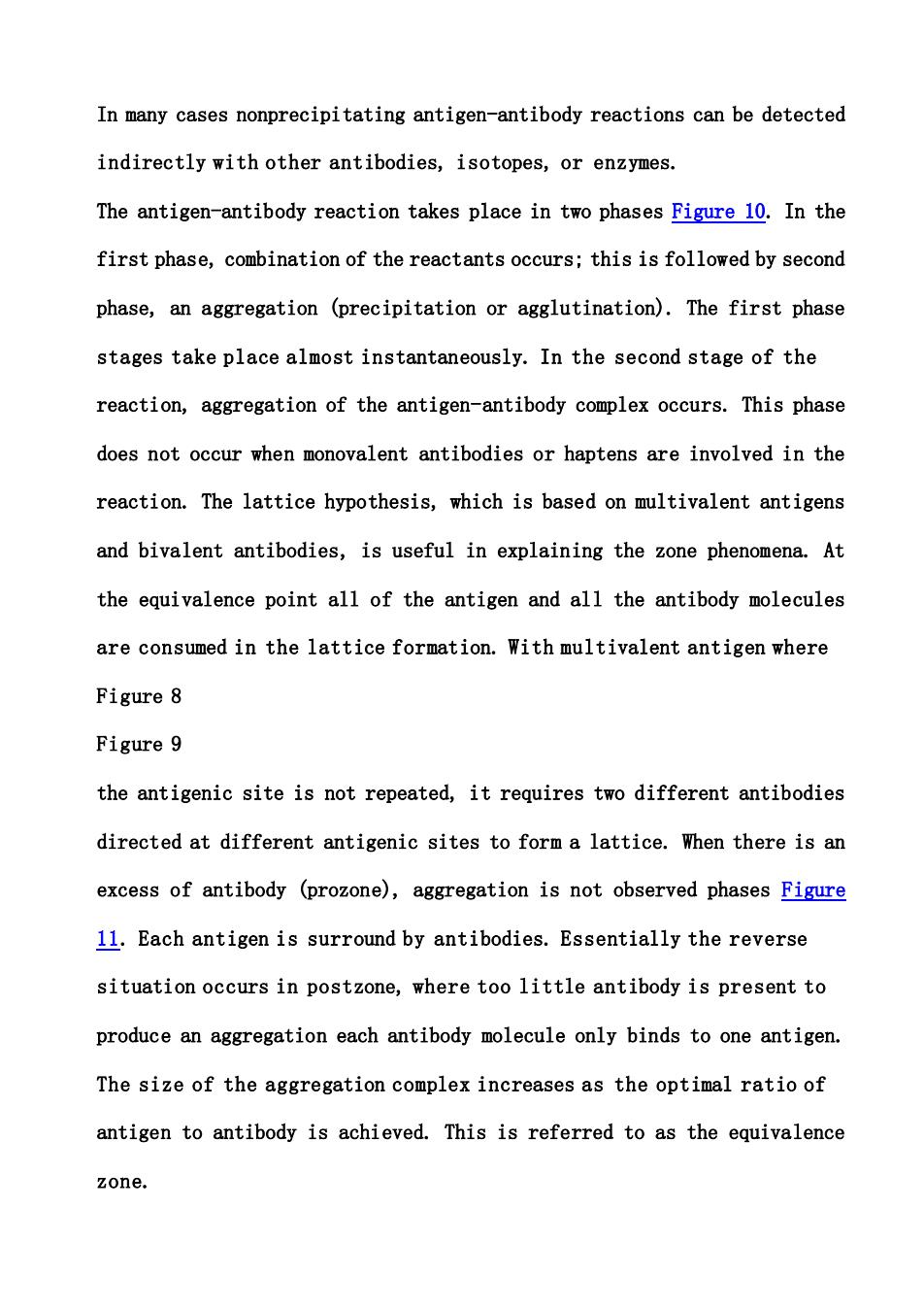正在加载图片...

In many cases nonprecipitating antigen-antibody reactions can be detected indirectly with other antibodies,isotopes,or enzymes. The antigen-antibody reaction takes place in two phases Figure 10.In the first phase,combination of the reactants occurs:this is followed by second phase,an aggregation (precipitation or agglutination).The first phase stages take place almost instantaneously.In the second stage of the reaction,aggregation of the antigen-antibody complex occurs.This phase does not occur when monovalent antibodies or haptens are involved in the reaction.The lattice hypothesis,which is based on multivalent antigens and bivalent antibodies,is useful in explaining the zone phenomena.At the equivalence point all of the antigen and all the antibody molecules are consumed in the lattice formation.With multivalent antigen where Figure 8 Figure 9 the antigenic site is not repeated,it requires two different antibodies directed at different antigenic sites to form a lattice.When there is an excess of antibody (prozone),aggregation is not observed phases Figure 11.Each antigen is surround by antibodies.Essentially the reverse situation occurs in postzone,where too little antibody is present to produce an aggregation each antibody molecule only binds to one antigen. The size of the aggregation complex increases as the optimal ratio of antigen to antibody is achieved.This is referred to as the equivalence zone.In many cases nonprecipitating antigen-antibody reactions can be detected indirectly with other antibodies, isotopes, or enzymes. The antigen-antibody reaction takes place in two phases Figure 10. In the first phase, combination of the reactants occurs; this is followed by second phase, an aggregation (precipitation or agglutination). The first phase stages take place almost instantaneously. In the second stage of the reaction, aggregation of the antigen-antibody complex occurs. This phase does not occur when monovalent antibodies or haptens are involved in the reaction. The lattice hypothesis, which is based on multivalent antigens and bivalent antibodies, is useful in explaining the zone phenomena. At the equivalence point all of the antigen and all the antibody molecules are consumed in the lattice formation. With multivalent antigen where Figure 8 Figure 9 the antigenic site is not repeated, it requires two different antibodies directed at different antigenic sites to form a lattice. When there is an excess of antibody (prozone), aggregation is not observed phases Figure 11. Each antigen is surround by antibodies. Essentially the reverse situation occurs in postzone, where too little antibody is present to produce an aggregation each antibody molecule only binds to one antigen. The size of the aggregation complex increases as the optimal ratio of antigen to antibody is achieved. This is referred to as the equivalence zone